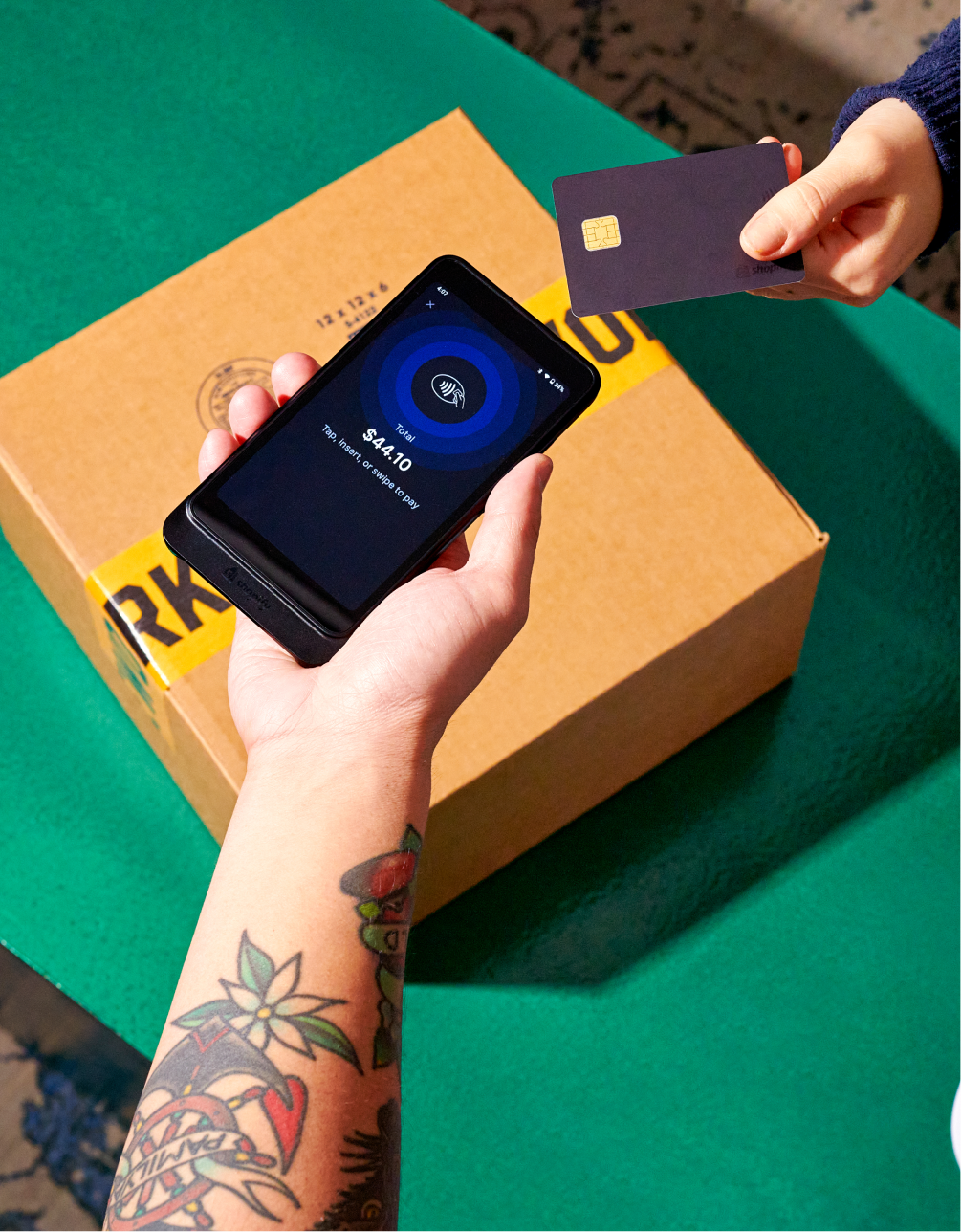The path of a typical customer is changing.
A shopper now needs to see a product multiple times before confirming their purchase decision. They’ve likely visited several channels to investigate a product, including marketplaces and review sites. Some of them even head offline into real-world locations to guarantee their next purchase is worth it.
Retailers who sell on multiple channels greet customers wherever they’re browsing, comparing, or actively buying new products. Multichannel retail sales exceeded $575 billion in 2023.
Multichannel software optimizes your company’s ability to target channels that make the most sense for your product or market. This guide shares how to sell on multiple channels without the logistical headache of operating multiple sales platforms individually.
The importance of selling on multiple platforms
You can supercharge your revenue by offering more channels to shoppers. One report found multichannel customers have a 15% to 35% higher average transaction than single-channel shoppers, resulting in a 30% higher lifetime value.
Multichannel retailers are also learning to expand their scope, finding additional sales forums to optimize their multichannel revenue. Customers now come from all kinds of channels, and more than that they’re being driven to these channels from all kinds of sources. Social media platforms like TikTok are now huge influencers behind purchasing decisions.
Paul Serra, owner of Suddora, says: “The decision to sell through multiple channels rather than solely through our DTC website was driven by the desire to reach a wider audience. We realized that our potential customers are not just confined to one platform.
They are scattered across different channels, each with their unique browsing and purchasing habits. By being present on multiple channels—wholesale, retail, social commerce, etc.—we’ve been able to tap into these diverse customer segments without much additional work. This multichannel approach has significantly expanded our customer base, providing a substantial boost to our sales and growth.”
Common challenges of selling on multiple platforms
Choosing the right sales channels
Not every online sales platform will drive revenue for your brand. Similarly, operating too many online selling platforms on the spin can drive budgets into the ground. Why spend thousands of dollars engaging customers on the sales channels they’re known not to buy through?
Use research to figure out which sales channels make the most sense to reach your shopping audience. Learn who they are and what resonates with them, and then craft an approach to reach them on priority channels. Reallocate wasted budget to your best-performing sales channels and exclude those that don’t move the needle.
If you’re a fine furniture outfitter, like Shopify Plus merchant Danish Design Store, perhaps social media isn’t the right outlet for your products. Instead, its Houzz integration allows the brand to reach thousands of smart, educated, and fashionable home-furnishing shoppers.
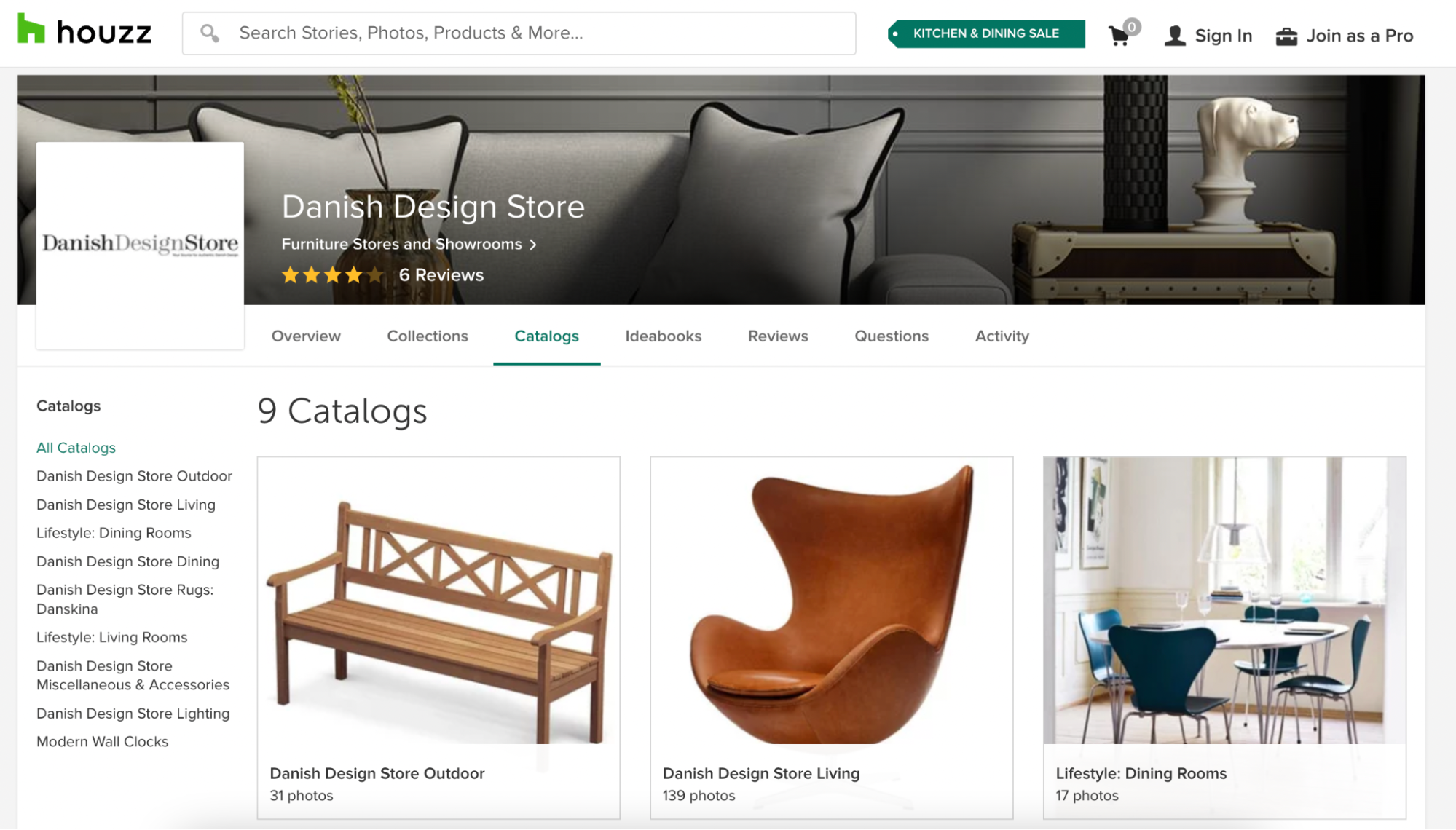
Houzz is one of Danish Design Store’s sales channels.
Each outlet or sales channel has its own perks. Whoever your customers are, and whatever their shopping preferences may be, selecting the right channel can help focus your multichannel marketing strategy and ensure you know precisely who you’re selling to.
Inventory management
Multichannel inventory management is an issue that has long plagued retailers. Understocking and overstocking can each have disastrous consequences. Those who succeed find the middle ground between bare shelves and bloat.
“It’s crucial to maintain accurate, real-time inventory levels to avoid overselling or underselling, which can lead to customer dissatisfaction,” says Paul. “Additionally, ensuring that all the channels are updated with the latest product information and pricing can be quite a task.”
It’s a problem that shoe brand Wilding also faced after choosing to launch showrooms that mirrored its online shopping experience in person. Wilding used Shopify POS to integrate online and offline purchases. It can now track customers, inventory, and orders all in one place, resulting in a 5% increase in stock availability.
Aside from its ability to connect several platforms in a single dashboard, Shopify helps automate all the tasks you need to ensure seamless service across all of your channels.
When product inventory gets low, use Shopify Flow to perform a number of processes, like sending a Slack message to your team to have an item unpublished from your store, or letting your marketing staff know to halt a product’s promotion until new stock comes in. That way, anyone interacting with your brand—regardless of the channel each touchpoint occurs through—gets the same friction-free shopping experience.
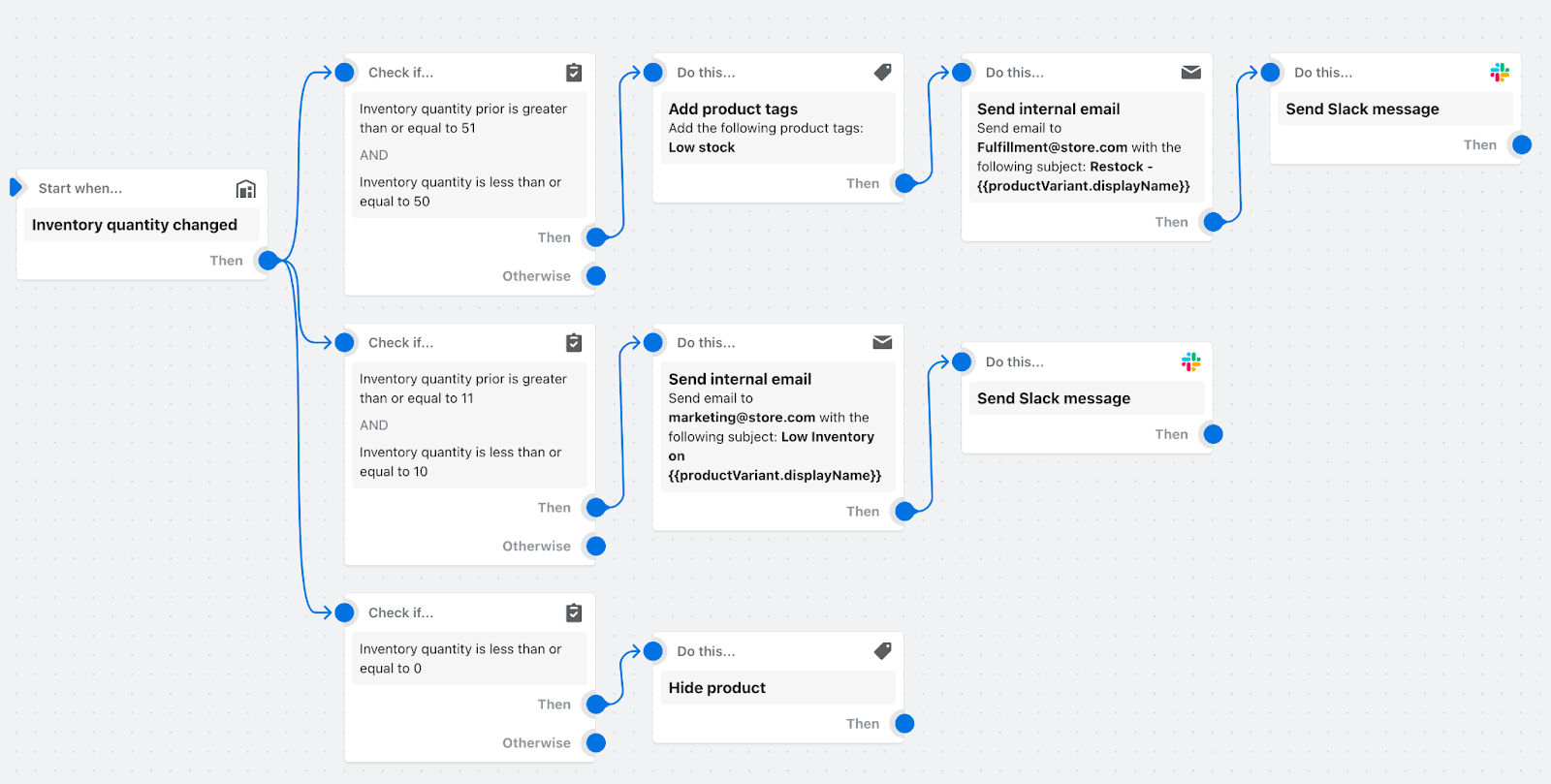
Shopify Flow automation that triggers when inventory quantity changes.
Logistics and order fulfillment
The supply chain industry is volatile and doesn’t show any signs of stabilizing.
Logistics challenges can quickly become a brand’s worst nightmare once orders begin to arrive from several platforms (both online and offline, across owned and non-owned channels). Customers have a different delivery option depending on the channel they use. Your fulfillment team is printing packing slips from different tools. Shipment tracking goes awry when each platform uses a different courier.
Take it from Kyle Watts, the co-founder and CEO of Tally. The beverage retailer sells direct-to-consumer alongside other sales channels—a decision Kyle made because Tally sells a food product and a major trial driver for food products is taste.
“Selling DTC is cost-prohibitive when shipping individual units, so the grocery store will always be the most effective channel for new customers to purchase and trial individual units,” says Kyle. “Finding a warehouse partner that fulfills multiple channels well, and cost-effectively, is our biggest challenge. Often the warehouse partner specializes in DTC fulfillment, which is high-touch, high-cost and does not deal with straight pallet shipments to grocery stores, which ideally is a low-cost, high volume operation.”
Solve this problem by choosing a multichannel ecommerce platform that integrates with the third-party logistics (3PL) providers you’re using to fulfill orders cross-channel. If you’re selling on Amazon, for example, Linnworks integrates with Amazon Shipping and DHL—the latter of which can ship orders generated through your online store.
If you’re also selling offline at pop-ups or permanent brick-and-mortar locations, take a leaf from Allbirds’ book and find a multichannel platform that syncs with your ecommerce dashboard.
Allbirds uses Shopify POS to create “endless aisles”—a fulfillment strategy that enables store associates to place an order, take payment, and have their logistics team ship the item directly to a customer’s home.
Allbirds’ head of global retail operations, Travis Boyce, says: “With Shopify Plus, we have our point-of-sale and ecommerce systems under one umbrella, which serves our ultimate purpose of being an omnichannel retailer and viewing the customer as one customer—no matter where they shop with us.”
Pricing variations by channel
Selling on more than one platform has the advantage of tapping into audiences that either prefer to or exclusively shop through a single channel. Pricing can play a role in that decision.
Take B2B versus DTC orders. Wholesale buyers have wildly different pricing expectations than end consumers. B2B customers are accustomed to expect a up to a 50% discount on the recommended retail price of each unit. They also pay 30 to 90 days later than their DTC counterparts.
Glide Outdoors is one brand that has struggled to control these pricing variations when selling across multiple channels. Its managing partner, Ken Driscoll, says: “The most significant challenge we’ve faced in this transition has been striking a balance between our DTC efforts and maintaining strong relationships with our existing dealer base. Understandably, our dealers might feel threatened by us selling directly to customers they could have engaged with themselves.”
To address this problem, Ken says: “We’ve ensured our dealers receive extremely competitive margins that not only provide them with healthy profits but also enable them to compete against large online-only retailers. By offering a superior product at a price-competitive MSRP [manufacturer’s suggested retail price], we have managed to navigate the complexities of selling through multiple channels while staying true to our core values.”
Even if wholesale ecommerce isn’t a sales channel you’re taking advantage of, end consumers likely expect to pay different prices on each platform. Instagram users spend $69 during a single interaction. Those on Pinterest, however, spend more than double ($154) in an average order.
There are also additional fees associated with selling items on each platform you don’t own. Most marketplaces take a slice of profits through transaction fees, often making it a less profitable sales channel unless you hike prices to account for them.
Use tools like Launchpad to schedule front-end customizations, track performance in real time, and automate event checklists for each sales channel.
Let’s say, for instance, that you’re planning a flash sale. You’d like to map out the parameters of your sale, decide when to launch it, and choose the channels on which you’d like to make the sale available.
Launchpad meets these requirements and also includes the ability to select whether you want prices reflected on all your ecommerce outposts or simply a few of your choice. Choose themes for how you want your sale to look, apply any discounts you’d like to make available to shoppers, and top it all off by deciding when you’d like the flash sale to end.
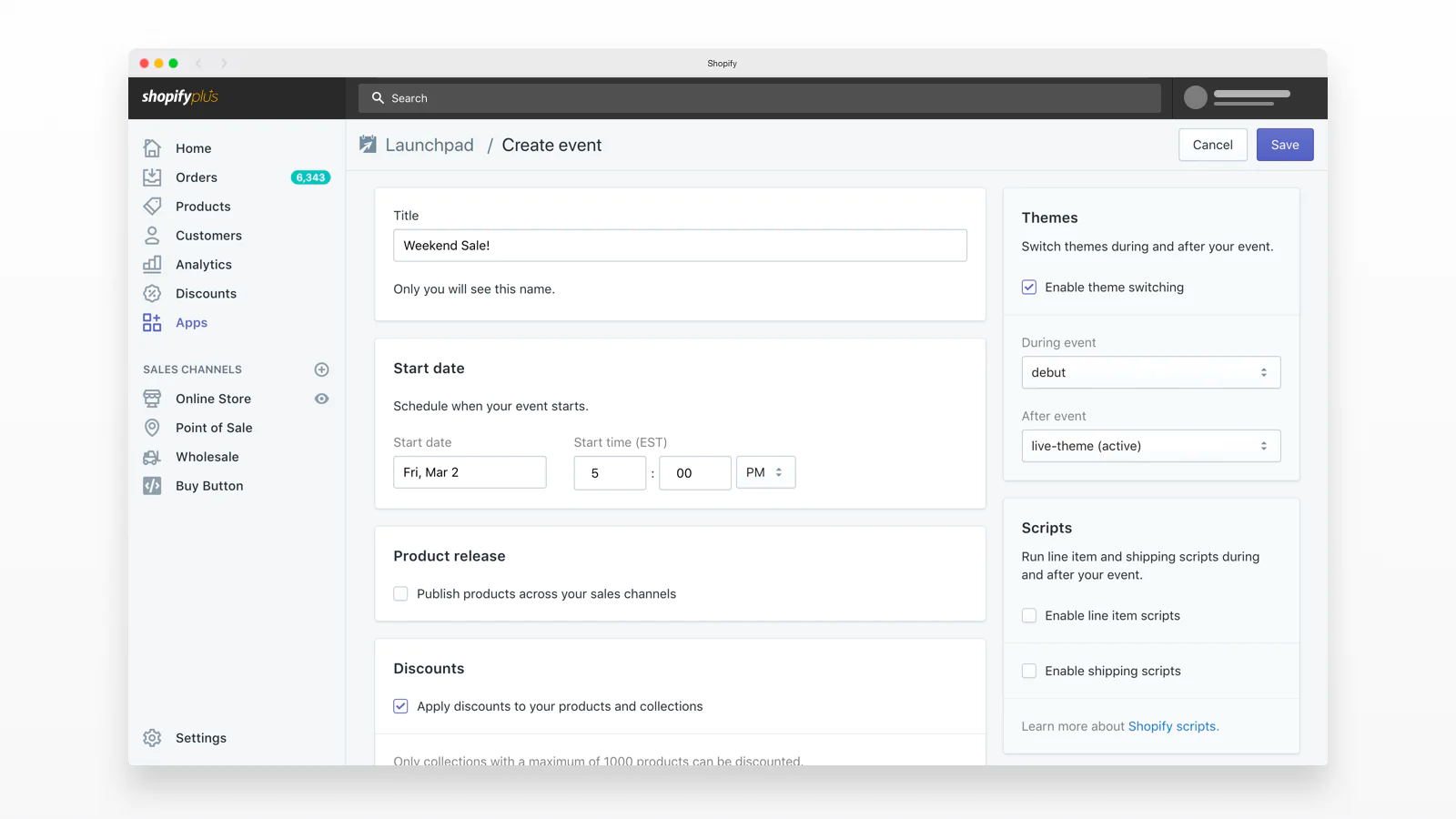
Use Launchpad to automate your sales and promotions.
Consistent product data
Customers coming from everywhere, influenced by everyone, all expect the same shopping experience across every one of your ecommerce channels. You must deliver consistency.
When uniformity exists on the back end, your customers don’t suffer a disjointed experience when purchasing products from different sales channels. Multichannel software allows you to offer your shoppers a clean, seamless experience across your ecommerce platforms.
“One of the biggest challenges we’ve encountered while selling on multiple sites has been maintaining consistency across these various channels,” says Eddie Deva, partner at Diamond Rose Box. “It’s crucial that our branding, messaging, and customer experience are unified across all platforms. This requires diligent management and coordination, as well as a well-integrated system for tracking inventory for our complex products.”
A product information management (PIM) tool exists to ease confusion for marketing teams. It stores key information about each product to ensure consistency across each sales channel. That includes each item’s:
-
SKU
-
Product description
-
Specification
-
Images
-
Price
-
Shipping data
-
Return options
Cross-listing software allows merchants to create multiple listings for the same product across several sales channels.
Ecommerce brands that sell on multiple marketplaces alongside their ecommerce store, for example, can duplicate an item’s listing price, name, description, and imagery across each platform. Marketplace shoppers get the same shopping experience regardless of whether they’re shopping on Amazon, Etsy, or the brand’s direct-to-consumer website.
Monitoring sales performance by channel
Almost every multichannel ecommerce business faces the same quandary: When attempting to prove return on investment (ROI), how can you precisely attribute social and content marketing to revenue generation?
Selling across multiple touchpoints can be a logistical challenge, so you have to be able to consolidate and centralize your internal operations.
You should unite all of your selling, marketing, and distribution around a single point. That way, you don’t need to leap between disparate systems to see the whole picture. You don’t need to manually update customer data. And you won’t have inventory management hiccups as buyers jump from channel to channel.
Look for a multichannel platform that provides analytical metrics like lifetime customer value, average cost per conversion, customer retention rate, and any other KPIs that your marketing and sales team have decided on, all at a glance.
In Google Analytics, for example, users can track how sales channels are performing and which channels are lagging or thriving in terms of customer conversion. Through the Assisted Conversions platform, you can generate reports that gauge the role and contribution level of each channel. Know which outlets merely assist in conversion, and find which outlets have been proven to convert visitors directly into sales.
Alternatively, use multichannel attribution modeling (like time-delay attribution) to determine the relative value of your marketing channels in terms of conversions and ROI. Map out the performance of all your channels into a comprehensive visual that tells the true story of your multichannel store.
Shopify Plus users can also view sales by channel in their dashboard or through apps like Attribution Connector. Instantly compare performance on an apples-to-apples basis. Arrange your traffic data by source, and then further segment by referrer name to get an accurate, up-to-date image of the orders and sales brought in by each of your channels.
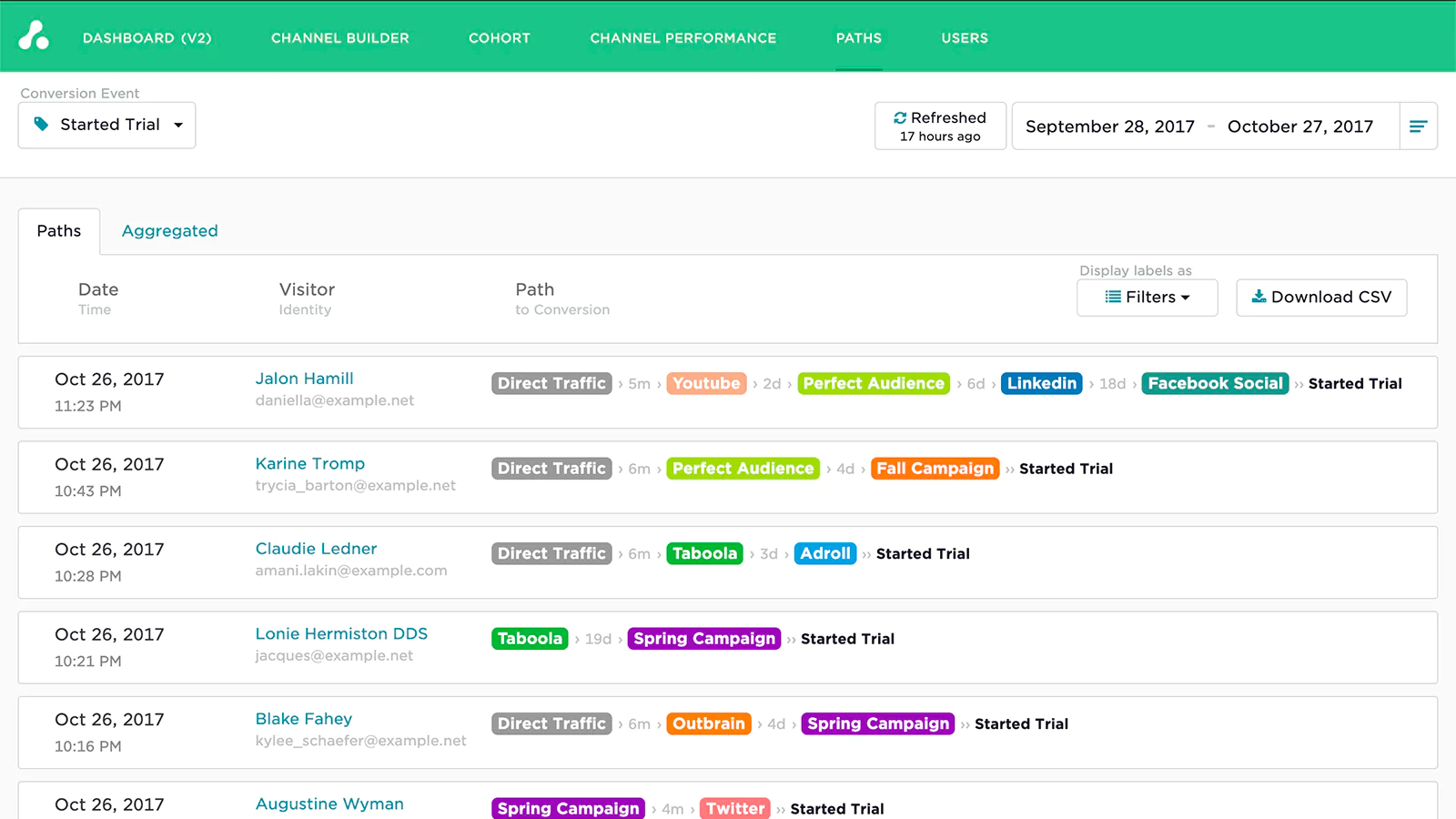
Attribution Connector shows each touchpoint a customer has in their shopping journey.
Alex Mirzaian, marketing manager for Eightvape, says: “We chose Shopify because it’s truly an all-in-one platform with the most data analytics capabilities. Being a manager means you need to crunch a ton of numbers to get to the data you’re looking for. Shopify either has a lot of the data prepared in their reports/analytics section or they can provide you with the raw data so you can come up with your own data.”
Best tools for selling on multiple platforms
What is a multichannel platform?
Multichannel software operates as the center of listing, selling, and managing different online channels to align customer experience and coordinate the flow of data–from inventory and shipping information to analytics and marketing. It gives businesses the freedom to administer each sales channel all from the same dashboard.
Centralization is crucial in the world of multichannel commerce, where customer experience rules. You want every one of your shoppers to have the same positive shopping journey each time, across each channel.
But as a retailer, governing every area manually can feel like an exercise in futility: bouncing from one app to the next; importing and exporting Excel data; cobbling together numbers accurate enough to run marketing, sales, and fulfillment.
Multichannel ecommerce software exists to:
-
Optimize inventory control
-
Leverage merchandizing templates
-
Expedite listing and updating products with accuracy
-
Streamline orders and fulfillment
-
Measure channel effectiveness
In other words, you can overcome just about every operational struggle that comes with managing a business that sells on multiple channels.
10 multichannel platforms
-
Shopify Plus
-
Sellbrite
-
SellerChamp
-
Goflow
-
Linnworks
-
AfterShip Returns
-
Jasper PIM
-
Gorgias
-
Veeqo Shipping
-
Polar Analytics
Multichannel software isn’t just a clever add-on or isolated platform: it underpins growth.
Unfortunately, even selecting the right multichannel software can be overwhelming. What software do I need? What features matter most? How do I sync orders and inventory? What about multichannel fulfillment? Will a multichannel approach cannibalize our online store?
Let’s explore 10 multichannel platforms and the advantages of implementing them.
1. Shopify Plus
Shopify Plus offers more than 20 different sales channels under one easy-to-manage ecommerce software roof. The all-in-one Shopify Plus dashboard gives a complete picture of your sales activity across channels like:
-
Online store: As the backbone of your strategy, responsive sites give your ecommerce business a flagship home. Desktop or mobile, it’s the easiest way to sell online.
-
Shop Channel: Reach more than 100 million shoppers who use the Shop App to discover new brands and track orders.
-
Shopify B2B: Sell directly to high-volume customers, with countless ways to cater to your buyers. Provide tiered or discounted pricing, password-protected storefronts for select customers with pre-negotiated deals, and set up wholesale customer loyalty and reward programs.
-
Facebook Shop: Enable instant purchases through your merchant Facebook page and Messenger, allowing customers to check out without ever leaving the social network.
-
Pinterest Buyable Pins: Enable pins with links to your approved Shopify products available for purchase, and even use Pinterest tags to track how customers interact with your store.
-
Shopping on Instagram: Make any Instagram post a point of ecommerce by introducing shareable, shoppable items that can be purchased without leaving the mobile app.
-
TikTok Shop: Sync your product catalog, run ads, and encourage social media viewers to visit your online store using the TikTok for Shopify app.
-
YouTube: Host livestreams through your YouTube channel and reference products from your Shopify store with clickable links.
-
Shopify POS: Take your store anywhere and provide an immersive end-to-end shopping experience in real life. Test new products and markets, all without losing track of inventory, order histories, or customer data.
More direct integrations also include some of the world’s biggest websites, online marketplaces, and networks: Google, Amazon, eBay, Wish, Spotify, Houzz, Lyst, Linktree, Ebates, and more.
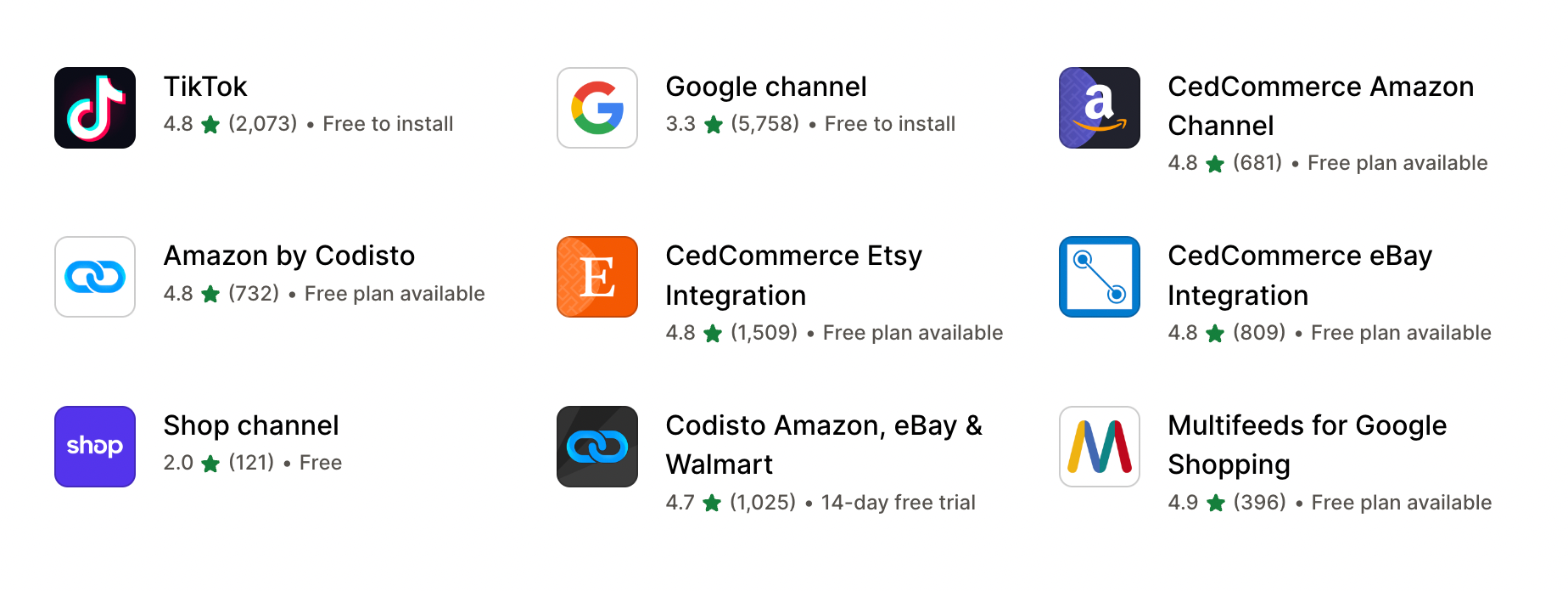
Sales channels available to Shopify Plus merchants.
Suddora’s Paul Serra says: “We chose Shopify as our multichannel platform, primarily for its versatility and integration capabilities. Shopify has robust multichannel features that allow us to seamlessly manage our DTC website, wholesale, retail, and social commerce channels all in one place.”
Access to all the channels is great, but it says more about your ecommerce strategy if you can isolate and target the other platforms that work best for your unique customers.
Shopify Plus also makes reporting easier with preset filters for specific categories like social selling. This data allows you to better manage inventory and make marketing and sales decisions, while also improving the overall buying experience for customers in the same way as if you were managing a single channel.
👉Find out how Animals Matter increased 45% in year-over-year sales by selling omnichannel
2. Sellbrite
Sellbrite’s Shopify app allows merchants to list their products on the world’s largest online marketplaces. With it, your Shopify dashboard remains the single source of truth for your multichannel sales strategy.
With Sellbrite for Shopify, merchants can:
-
Fulfill marketplace orders from the same back end that powers your DTC storefront
-
Use its multichannel listing software to sell on multiple online marketplaces, including eBay, Amazon, and Etsy
-
Create customized pricing rules for each sales channel
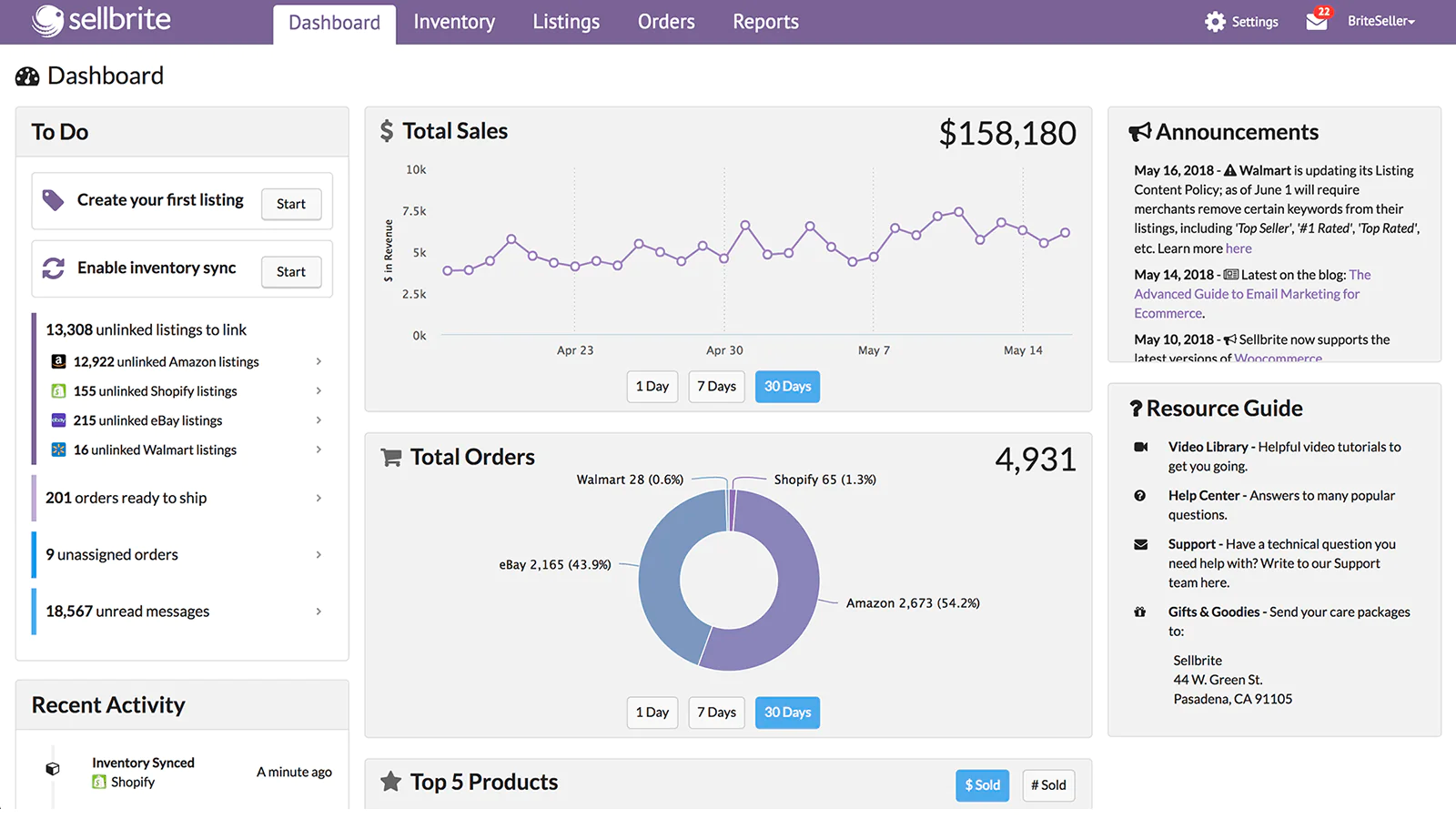
Sellbrite’s multichannel sales dashboard.
3. SellerChamp
SellerChamp is a multichannel listing software that allows online retailers to sync product listings, inventory, and fulfillment instructions across multiple sales channels. Plus, since it offers a direct integration with Shopify, you can use SellerChamp to submit cross-listings on marketplaces like eBay, Etsy, Walmart, and Amazon.
SellerChamp’s features include:
-
Bulk lister. Scan universal product codes (UPC) to produce product listings on the marketplaces you sell through—no manual copy and pasting required.
-
Inventory sync. Manage inventory by syncing your Shopify inventory data with SellerChamp to prevent overselling.
-
Multichannel fulfillment. Connect fulfillment partners like Amazon FBA or Deliverr in SellerChamp’s dashboard, complete with customized workflows and packing slips to improve accuracy.
4. Goflow
Goflow’s software integrates with Shopify and a suite of other sales channels, including Amazon, Costco, Macy’s, Target, and Walmart. It consolidates orders from each platform into one and offers supplementary services to enable multichannel commerce.
Goflow offers:
-
Shipping and logistics. Create and print shipping labels within Goflow to save shipping weights and dimensions with preset boxes that speed up order fulfillment.
-
Warehouse management. Pair global warehouses, including those you own and access via a 3PL, in Goflow’s dashboard.
-
Cross-listing. List products across Goflow’s suite of integrated marketplaces within just a few clicks so you can improve accuracy and claw back an ecommerce team’s most precious resource: time.
5. Linnworks
Linnworks’ platform helps growing retailers manage multiple sale channels. Its Shopify app integrates with your online store to get the bigger picture on how each channel contributes to wider business performance.
Features include:
-
Multichannel inventory management. Pull inventory levels from your Shopify dashboard to prevent overselling on alternative channels. Its stock forecasting functionality also helps guide open-to-buy budgets.
-
Custom shipping rules. Use automations to decide which shipping carrier or 3PL is best for each individual order, regardless of where it originated from.
-
Advanced multichannel reporting. Get real-time data on how each sales channel is performing using sales volume, refunds, purchasing, stock value, and order status reports.
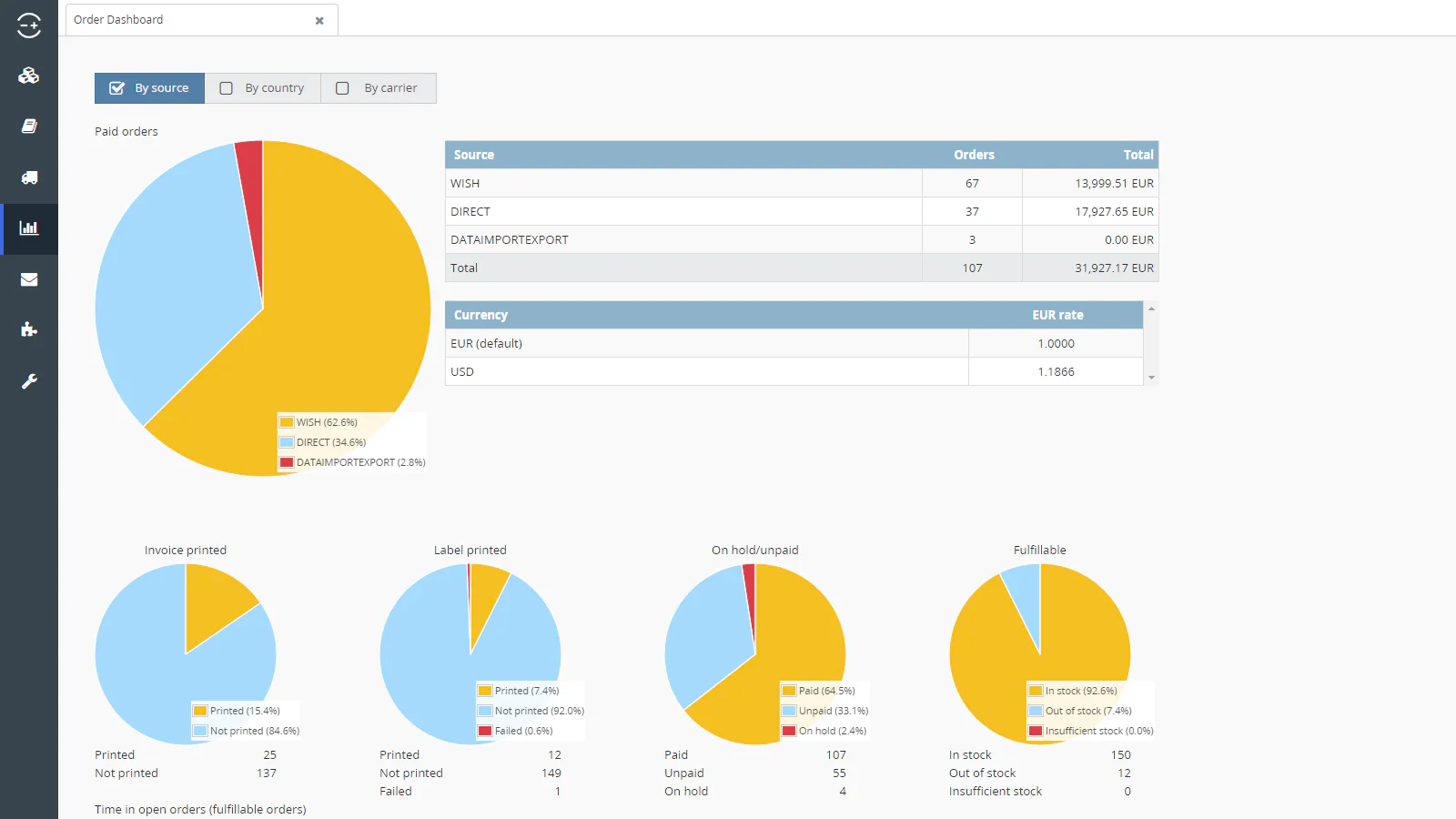
Linnworks’ ecommerce reports.
6. AfterShip Returns
Returns are a problematic—but important—part of doing business online. The AfterShip Returns app enables multichannel merchants to manage their reverse logistics through Shopify, so you can perfect the returns experience for customers, regardless of where they buy.
AfterShip Returns offers:
-
Branded returns page. Divert customers who’ve bought through alternative sales channels back to your DTC store to initiate a return through AfterShip’s self-service online portal.
-
Return rules. Upload your returns policy and automatically grant or disqualify returns according to your criteria.
-
Return method options. Provide the same multichannel experience to customers who are returning their items by offering a range of return methods, such as return to store, Walgreens drop off, or prepaid DHL labels.
7. Jasper PIM
Ensuring accuracy when selling on multiple channels is a hassle for most merchants. Jasper aims to solve that problem. Its PIM system connects multiple data sources to store accurate information for each product.
Using Jasper’s PIM, you can:
-
Manage your entire catalog. Store product attributes—such as SKUs, descriptions, shipping notes, and warranty information—all in one place. Changes automatically reflect on each shopping channel you’ve integrated.
-
Syndicate listings. Push products on the world’s biggest online marketplaces, like Walmart or Amazon, using Jasper’s promotional pricing functionality.
-
Tap into global marketplaces. Use Jasper to store translated product names, descriptions, and currencies. Pull from this repository when selling on international marketplaces.
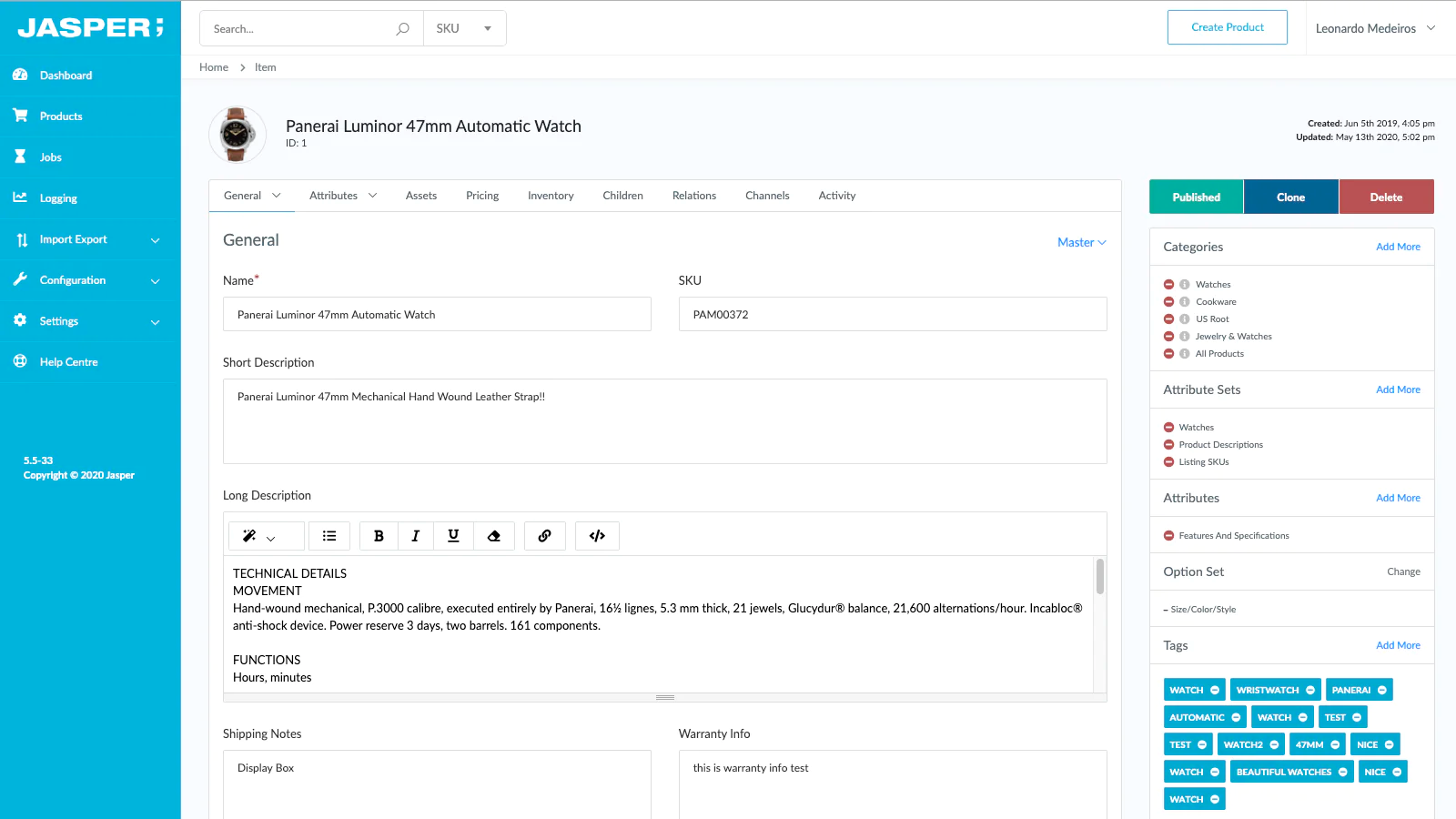
Jasper’s PIM stores key product attributes.
8. Gorgias
Gorgias’ help desk software pulls conversations from customers across each sales channel so your team can respond quickly from a single dashboard.
Merchants using Gorgias can:
-
Pull conversations from a variety of channels. This includes email, live chat, SMS, WhatsApp, social media comments, and voice message.
-
Provide self-service menus. Save time responding to conversations with an automated live chat feature that guides customers to their answer—no human intervention necessary.
-
See the full customer journey. Pull Shopify order data, see a customer’s contact details and view previous interactions with customer support through Gorgias’ help desk dashboard. Give customers the personalized service they expect.
9. Veeqo Shipping
Veeqo Shipping is a free multichannel shipping software that helps merchants offer free, fast shipping to customers who buy across any sales channel.
With Veeqo Shipping’s Shopify Plus certified app, merchants can:
-
Offer discounted shipping. Veeqo’s partnerships with FedEx, DHL, UPS, and USPS allows you to offer the free shipping 75% of customers expect—without causing severe damage to profit margins when selling cross-channel.
-
Configure automated shipping rules. Connect sales channels and route orders to the best shipping courier or 3PL for each order, depending on preset weight, value, and specifications.
-
Offer multichannel shipping tracking. Allow customers to track their delivery, regardless of where they bought and the option allocated, with Veeqo Shipping’s tracking functionality.
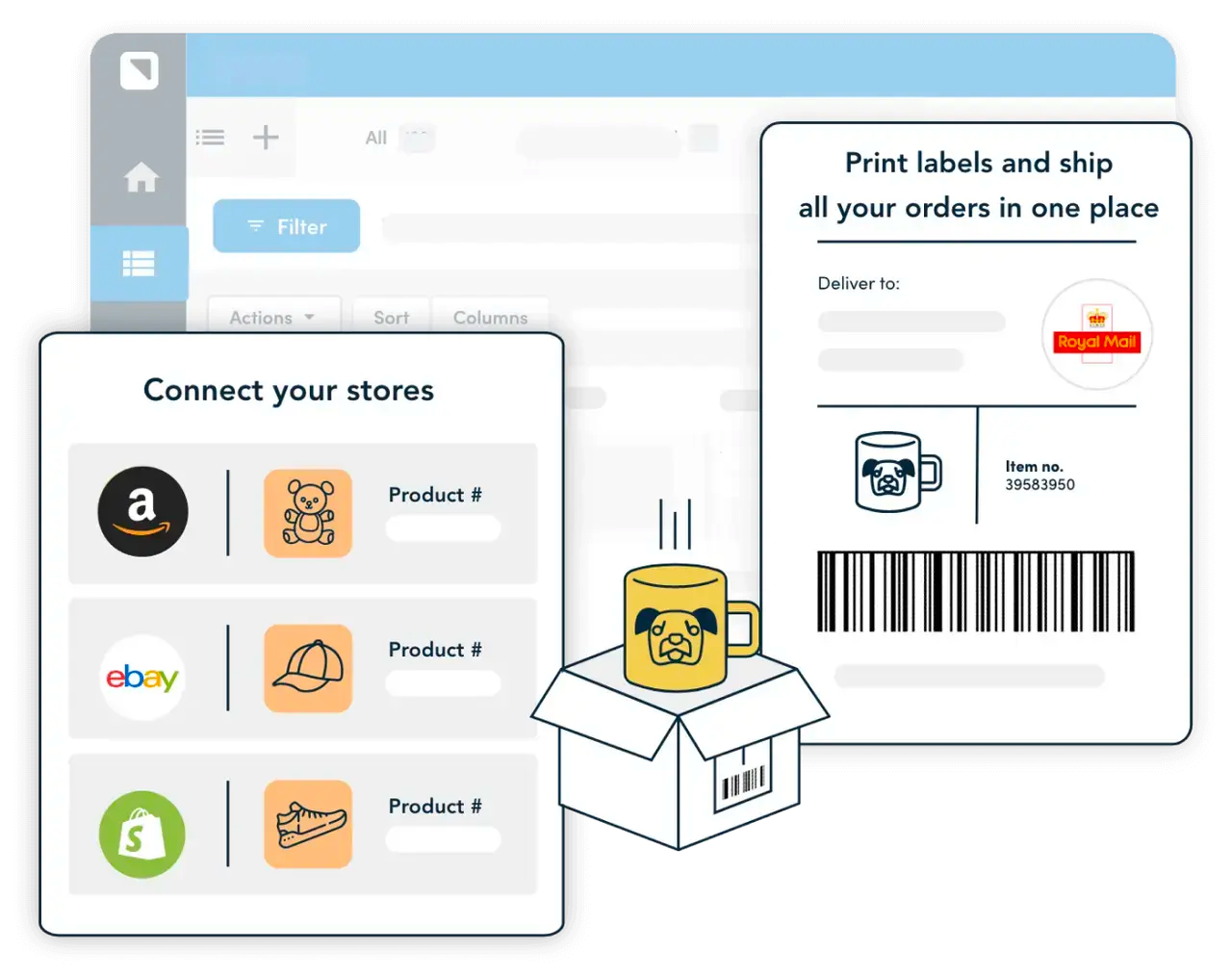
Merge shipping data from several platforms into Veeqo.
10. Polar Analytics
Polar Analytics is a business intelligence tool that pulls data from every sales channel into one reporting dashboard. More than 1,500 Shopify stores use its data platform to make informed decisions and abolish manual reporting.
Polar Analytics gives merchants the ability to:
-
Connect multiple marketing channels. Sync data from Google Analytics, Facebook, Klaviyo, TikTok, and Pinterest Ads with Shopify order data so you can get the bigger picture on how multichannel marketing campaigns impact sales.
-
Use preconfigured dashboards. Get instant visibility into metrics that matter most with dashboards that display your most important KPIs.
-
Set alerts. Integrate Polar Analytics with Slack or email to get real-time notifications when your most important metrics change.
Sell on multiple platforms
Customers hopping from one channel to the next, a bad experience between devices, internal systems that have too many cracks, gaps, and leaks … Doesn’t it all sound like a nightmare?
Multichannel selling results in more customers and more products sold. But it’s virtually impossible to pull off without specialized software.
You need something that’s diverse enough to reach customers where they are, with official partnerships for a seamless experience. Shopify Plus unites your back-end processes, automates where possible, and provides at-a-glance sales data so you can make better, faster decisions.
Sell on multiple platforms FAQ
What is cross platform selling?
Selling across multiple platforms or marketplaces is called cross-platform selling. By tapping into each platform's unique customer base, you can reach a broader audience, increase your market presence, and earn more sales.
Can you sell on multiple platforms?
Businesses can sell across multiple sales channels, including an online store, marketplaces, social media, and wholesale platforms, with a multichannel sales strategy. This allows merchants to reach customers wherever they buy.
Can you sell the same product on multiple sites?
Yes, you can sell the same product on multiple sites. Brands often use a centralized inventory system to manage this effectively. So, when a sale or a new product is added, the system updates all platforms in real time.
How do I list on multiple platforms at the same time?
To list on multiple platforms at the same time, you can use Shopify Plus, which is designed for multi-channel selling. With Shopify Plus, you can manage listings, inventory, and sales across different platforms from a single interface.
Why sell on multiple platforms?
Multichannel selling is important because it pushes your business in front of many customers at once. Through multichannel selling, merchants can reach customers at different points in their purchasing process.
How many platforms should I sell on?
There is no limit for how many sales channels a retailer can have. However, it’s best to start on a concentrated platform that most customers purchase through. Expand from there once you’ve come to grips with the challenges of multichannel commerce.
Read more
- 5 Easy Tips For Getting Started With Conversion Rate Optimization
- ‘Emotional Ecommerce’ Increases Repeat Purchases 80%, Retention 58%
- An Omni-Channel Commerce Solution: The What, Why, and How of Retail’s Future
- Black Friday Facebook Ads Guide from $6.8M in Ecommerce Holiday Spend
- Is Your Agency 'The One'? An Inside Scoop on Finding a True Partnership
- Dynamic Pricing: The Art and Black Magic of Situational Pricing
- B2B Ecommerce Features for Acquiring, Selling & Retaining Customers
- How to Use a What-if Analysis to Measure the Effects of Your Decisions
- International Ecommerce Strategy: New Tools to Simplify Global Growth for High-Volume Businesses


